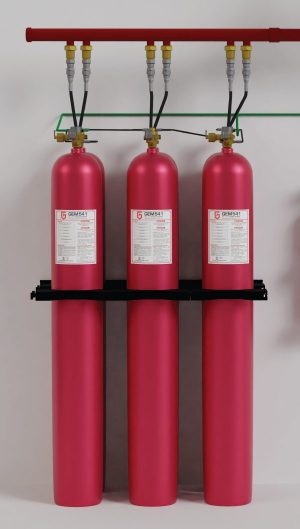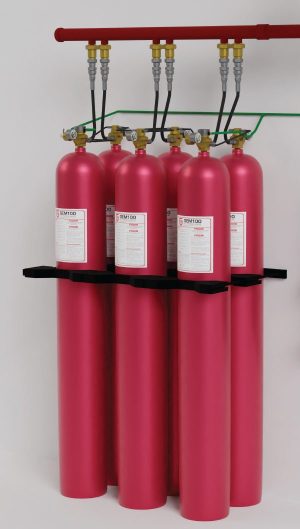Inert Gas Fire Suppression System
Showing all 2 results
-
GEMTEX GEM541® IG541 Fire Suppression System
View More -
IG-100 GEM100® Inert Gas Fire Suppression System
View More
Inert Gas Fire Suppression System in Malaysia
Trust VIC Engineering, Malaysia’s top supplier for a reliable inert gas fire suppression system, for protecting your assets. We provide expert consultation, installation, and maintenance, ensuring personalised, high-standard fire protection.
Frequently Asked Questions on Inert Gas Fire Suppression System
What is inert gas fire suppression?
Inert gas fire suppression is a clean, residue-free fire protection system that uses gases like nitrogen, argon, and carbon dioxide to extinguish fires. It is commonly used in data centers, server rooms, museums, and high-value asset protection.
What gases are used in fire suppression systems?
Inert gas systems typically use:
- Nitrogen (N₂): Suitable for electrical rooms and data centers
- Argon (Ar): Ideal for museums, libraries, and archives due to its non-corrosive properties
- Carbon Dioxide (CO₂): Common in industrial applications, but requires safety precautions due to oxygen displacement
How does inert gas extinguish a fire?
Inert gases work by reducing oxygen levels in the protected area to a point where combustion cannot be sustained. This method is:
- Safe for sensitive equipment – No residue or chemical reactions
- Environmentally friendly – No ozone depletion potential
- Suitable for occupied spaces – Unlike CO₂, inert gases do not pose immediate health risks
What is the NFPA standard for inert gas systems?
Inert gas suppression systems comply with NFPA 2001 (Standard on Clean Agent Fire Extinguishing Systems), which ensures safe design, installation, and maintenance.
What is the difference between inert gas and FM200?
| Feature | Inert Gas | FM200 |
|---|---|---|
| Fire Suppression Method | Lowers oxygen levels | Absorbs heat |
| Storage Duration | Long-term, cost-effective | Shorter lifespan |
| Environmental Impact | Eco-friendly, no chemicals | Contains hydrofluorocarbons (HFCs) |
| Residue & Cleanup | Zero residue, safe for electronics | May leave minimal residue |
What is the difference between an inert gas and a clean agent?
- Clean agents (e.g., FM200) – Use chemicals to disrupt the fire’s chemical reaction
- Inert gases – Lower oxygen levels to stop combustion, making them non-toxic and completely residue-free
For expert guidance on choosing the right fire suppression system, Get in Touch with VIC Engineering


